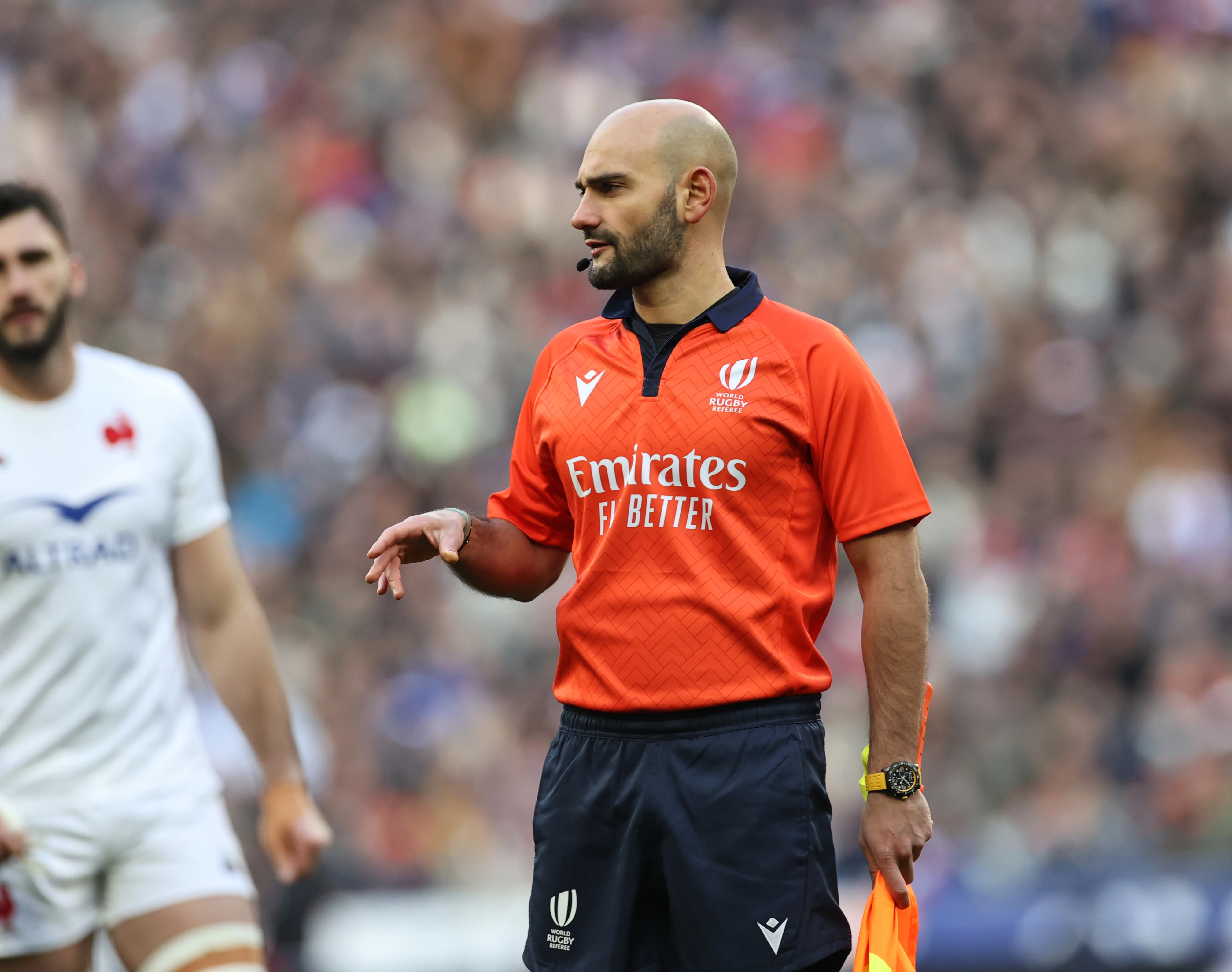Round 2 of the TikTok Women’s Six Nations demonstrated once again the ambition and skill rife in the game.
Using ball-tracking technology to signal the headlines of the weekend’s action, the Smart Ball insights presented by Sage indicated the prevalence of passing metres in deciding these fixtures at the apex of the women’s game.
England were emphatic for the second week in a row, making a quite astonishing 1,566 passing metres against Italy – the highest total recorded in a match in either the Men’s or Women’s championships. The greatest testament to their ability to go wide is the prolificacy of the England back three. Claudia MacDonald, Jess Breach, and Abby Dow have started both of the first two rounds as a unit, scoring 11 of England’s 21 Championship tries so far. Currently, they are perfectly exploiting their potency out wide, with halfbacks Lucy Packer and Holly Aitchison ranking top in their respective positions for passing metres (1,171 and 522 respectively). Can anybody disrupt this England machine?
Their opponents in Round 3 are a fierce rival, who have been brutal in their pursuit of victory thus far in the tournament. Led by the physicality of prodigy Sisilia Tuipulotu, Wales have based their game on a dominant pack. Tuipulotu has scored three tries in two games alone, and generally Wales have been savage in the tight, scoring two maul tries so far and crossing the whitewash most regularly from ‘pick-and-gos’. The Smart Ball shows us how Wales have bought into this power game across the park: they have an average pass distance of 5.4 metres – shorter than any other team. However, they have not just been a blunt instrument, basing this gameplan on a sharp lineout which has operated at a tournament-high 91% success rate, with their average throw efficiency the joint-highest in the Championship (96%). Their contrasting style to the Red Roses could prove the basis of a huge upset.
The success of the Welsh pack so far highlights more than just their power-oriented gameplan though but is emblematic of the quality and skill level of forwards in the Championship at large. Forwards accounted for seven of the 20 try assists in Round 2, with precision and sharp thinking accompanying their brawn. Perhaps the pick of Sarah Bern feeding MacDonald for England’s fourth try. Playing the ball wide, England manufactured a three-on-two, Bern straightened the attack and hit Lagi Tuima’s 34.6 kph pass at impressive pace. After 1.9 seconds on the ball, Bern cleverly found MacDonald with a 90% efficient spiral pass. The tighthead played this situation as well as any centre could have – a great testament to the varied skillsets in the Championship.
Italy and Ireland will face off in the second match of Round 3. Apart from an early flourish against France in Round 1 for Italy, these sides have been well beaten in the opening stages of their campaigns. For the Italians, their fast start against France – who came into this tournament touted as the major competition for England in this tournament – was based on the pace of ball they could generate at the ruck. In Round 2, however, their average ground reload time was one second – the second highest of the round. More zip at the base will be key for them to seize the opportunity they will have to secure a first win of the tournament.
As for Ireland – who have scored just one try in the tournament so far – they will need to look for more territorial ascendancy to challenge the Italians. For the second week running, Ireland made fewer kicking metres (334) and territory gain (228) than any other team. This was compounded by the fact that they conceded 143 metres in territory from penalty kicks to touch. To be more competitive than they have been in the opening two rounds, Ireland need to boost these Smart Ball metrics. However, there was evidence of improvement in this area between Rounds 1 and 2, with their average territory gain per kick increasing from 18.5 metres to 23.4.
France – on the other hand – have had the benefit of fly-half Carla Arbez’s monster boot to put them in the right areas of the pitch. Arbez has kicked the two longest kicks of the Championship so far (48.1) and 47.9 metres respectively), averaging 43 metres – the highest of any player in either the Women’s or Men’s tournament. To exploit this field position, France play wide and fast: they have the longest average pass distance in the tournament (6.1 metres) and Arbez has the fastest average pass of any Women’s Six Nations fly half (33.3 kph). When Alexandra Chambon has come off the bench, this has only been capitalised upon, with the replacement scrum-half currently averaging the longest pass of anyone in her position (eight metres). Despite a shaky opening round fixture against Italy, France look like a hot prospect to grow into this tournament and challenge for the title.
Scotland may have suffered two losses in the opening rounds of the tournament but challenged Wales for long spells in Round 2. Key to their success as the Championship progresses will be the performances of fly-half Helen Nelson. Scotland’s primary kicker, Nelson has booted the ball more often than any fly-half bar England’s Aitchison – a total of 29 times – and also produced a try assist last weekend. Her work at the restart could also be a great attacking platform for the Scots moving forward as she has averaged the longest distance (37.1 metres) and joint-longest hang time (3.3 seconds) on her restarts in the tournament. Will she prove the difference when Scotland meet their auld allies next weekend?



